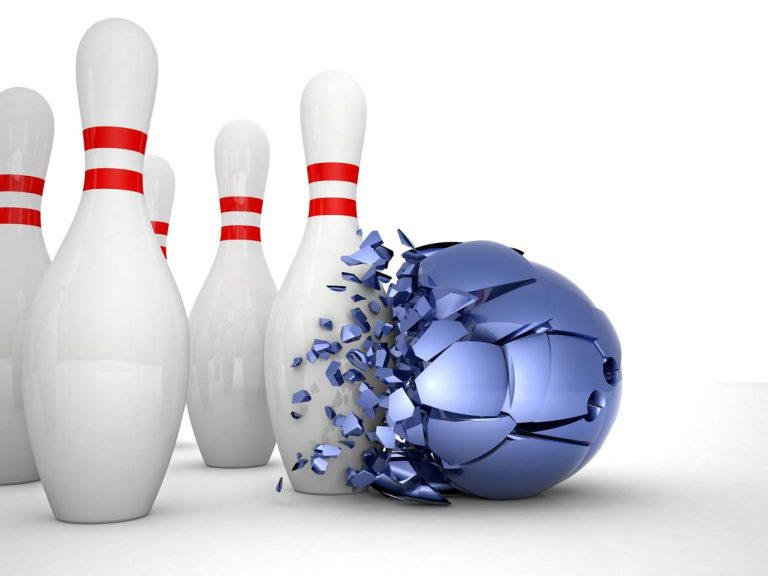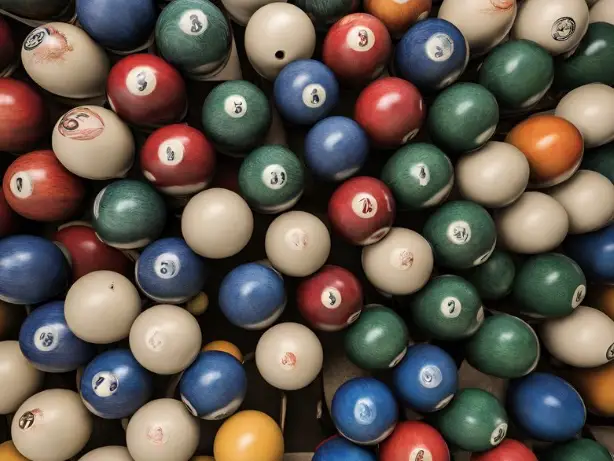Are Duckpin Bowling Lanes the Same as Regular Bowling Lanes? Explained
If you’re new to bowling, you may be wondering if there’s a difference between duckpin bowling lanes and regular bowling lanes. The answer is yes, there are some key differences between the two. Duckpin bowling is a unique sport that offers a different experience than traditional ten-pin bowling.
One of the main differences between duckpin bowling lanes and regular bowling lanes is the size. While both types of lanes are the same length, duckpin bowling lanes are narrower and have smaller gutters. Additionally, the pins used in duckpin bowling are smaller and lighter than those used in regular bowling. These differences can make duckpin bowling a bit more challenging, but also more fun and exciting.
If you’re looking for a new and fun way to experience bowling, duckpin bowling may be just what you’re looking for. Whether you’re a seasoned bowler or a beginner, this unique sport offers a fun and challenging experience that’s sure to keep you entertained. So why not give it a try and see for yourself what makes duckpin bowling so special?
Differences Between Duckpin and Ten-Pin Bowling
If you’re familiar with regular ten-pin bowling, you might be wondering how duckpin bowling differs from it. While the basic concept of knocking down pins with a ball remains the same, there are several key differences between the two sports that you should be aware of.
Lane and Pin Dimensions
One of the most noticeable differences between duckpin and ten-pin bowling lies in the size and dimensions of the lanes and pins. According to Bowling for Beginners, duckpin bowling pins are shorter, slightly thinner, and lighter than their ten-pin equivalents. Duckpins are arranged in a triangle identical to that used in ten-pin bowling, but they measure about 9.4 inches (24 cm) tall, while ten-pin bowling uses taller, narrower pins that stand at a height of 15 inches (38 cm) and have a more tapered shape.
Bowling Balls and Finger Holes
Another key difference between duckpin and ten-pin bowling is the size and weight of the balls used. According to Bowling for Beginners, duckpin bowling balls are smaller and lighter than ten-pin bowling balls. They measure no more than 5 inches in diameter and weigh no more than 3 lbs 12 oz. Unlike ten-pin bowling balls, duckpin bowling balls do not have finger holes, which makes them more difficult to grip and control.
Scoring System and Gameplay
The scoring system and gameplay in duckpin bowling are also different from those in ten-pin bowling. According to Duckpin Bowling – Wikipedia, in duckpin bowling, each player is allowed three rolls per frame instead of two, as in ten-pin bowling. Additionally, a strike is achieved when all ten pins are knocked down in two rolls, while a spare is achieved when all ten pins are knocked down in three rolls. The maximum score per game in duckpin bowling is 300, but this is much harder to achieve than in ten-pin bowling due to the smaller, lighter pins and lack of finger holes on the balls.
In summary, while duckpin and ten-pin bowling share some basic similarities, they are quite different sports with their own unique rules and gameplay mechanics. Whether you’re a seasoned ten-pin bowler looking to try something new or a complete beginner to both sports, understanding these differences can help you enjoy both games to the fullest.
Historical Context and Popularity
Duckpin bowling is a variation of ten-pin bowling that is played with smaller balls and 10 shorter, stockier pins. While the origins of duckpin bowling are disputed, some sources suggest that it was first played in Baltimore, Maryland in the late 19th century.
Origins of Duckpin Bowling
According to an article on Wikipedia, the earliest documentation of a duckpin bowling tournament was published in Lowell, Massachusetts in May 1894. The game averages ranged from about 73 to about 94. Since then, the game has grown in popularity, especially on the East Coast of the United States.
Regional Popularity and Bowling Alleys
Duckpin bowling is most popular in the northeastern United States, particularly in Maryland, Connecticut, and Boston. However, it is also played in other states such as Alabama, Indiana, and Pennsylvania.
There are even bowling alleys solely dedicated to duckpin, given its unique lanes, balls, and scoring. The National Duckpin Bowling Congress was established in 1927 to promote the sport and standardize its rules.
While duckpin bowling is not as popular as regular ten-pin bowling, it has a dedicated following and is enjoyed by many. The shorter, stockier pins and smaller balls make the game more challenging, and the unique scoring system adds an extra layer of excitement.
In conclusion, while duckpin bowling lanes are similar to regular bowling lanes, there are some key differences in the equipment used and the rules of the game. Despite its regional popularity, duckpin bowling is still a relatively niche sport, but one that is enjoyed by many dedicated fans.
Technical Aspects and Player Experience
Techniques and Equipment
Duckpin bowling and regular tenpin bowling share some similarities, but the two sports are different in many ways, including the technical aspects and equipment used. In duckpin bowling, the balls are smaller and lighter compared to the ones used in regular bowling. The pins are also smaller and arranged in a triangular shape. The lanes used in duckpin bowling are similar in dimensions to those in ten-pin bowling, with slight variations in the placement and spacing of the pins.
Technique is essential in both duckpin and tenpin bowling. In duckpin bowling, the technique is similar to that of tenpin bowling, but it requires more finesse and precision. You need to have a good hand release and follow-through to achieve a good score. The hook technique is also used in duckpin bowling, where the ball is released with a spin to create a hook motion towards the pins.
Equipment is also essential in both sports. In duckpin bowling, the ball is smaller and lighter, making it easier to handle, but it requires more power to knock down the pins. The shoes used in duckpin bowling are similar to those in tenpin bowling, but they have a smoother sole to allow for a sliding motion.
Challenges for Beginners and Professionals
Duckpin bowling can be challenging for both beginners and professionals. Beginners may find it challenging to handle the smaller and lighter ball, and they may struggle to knock down the pins with the required power. Professionals, on the other hand, may find it challenging to achieve a high score due to the smaller and lighter ball and the smaller pins.
To overcome these challenges, beginners need to practice their technique and build up their power. They also need to learn the hook technique to achieve a better score. Professionals need to practice their release and follow-through to achieve a good score. They also need to develop a good strategy to handle the smaller and lighter ball and the smaller pins.
In conclusion, duckpin bowling and regular tenpin bowling may share some similarities, but they are different in many ways, including the technical aspects and equipment used. Technique and equipment are essential in both sports, and beginners and professionals face different challenges. With practice and the right technique, you can enjoy and excel in both sports.
Cultural Impact and Modern Adaptations
Duckpin Bowling in Media and Entertainment
Duckpin bowling is a popular sport that has been featured in various forms of media and entertainment. For instance, the Boston Daily Globe reported on a duckpin bowling tournament that took place in Lowell, Massachusetts in 1894. Since then, duckpin bowling has gained popularity across the United States, with many bowling centers offering the sport as an alternative to traditional ten-pin bowling.
Duckpin bowling has also been adapted to accommodate younger players. Many bowling centers offer mini bowling lanes, which are shorter and narrower than traditional lanes, making them perfect for kids and birthday parties. Additionally, innovations in technology have made it possible for bowling centers to offer interactive bowling games that are perfect for parties and events.
Innovations in Duckpin Bowling
In recent years, there have been several innovations in duckpin bowling that have made the sport more exciting and accessible to players of all skill levels. For example, the Flying Pins system, which was developed by Atomic Bowl, allows players to knock down virtual pins on a large screen. This technology has been used in both competition and recreational settings, making it a popular addition to many bowling centers.
Another innovation in duckpin bowling is the use of modern bowling shoes. Unlike traditional bowling shoes, which are often uncomfortable and unattractive, modern bowling shoes are designed to be stylish and comfortable. Many bowling centers offer rental shoes in a variety of sizes and styles, making it easy for players to find a pair that fits their feet and their personal style.
Overall, duckpin bowling has had a significant impact on the sport of bowling, and it continues to evolve and adapt to meet the needs of modern players. Whether you are a seasoned bowler or a newcomer to the sport, there is something for everyone in the world of duckpin bowling.






